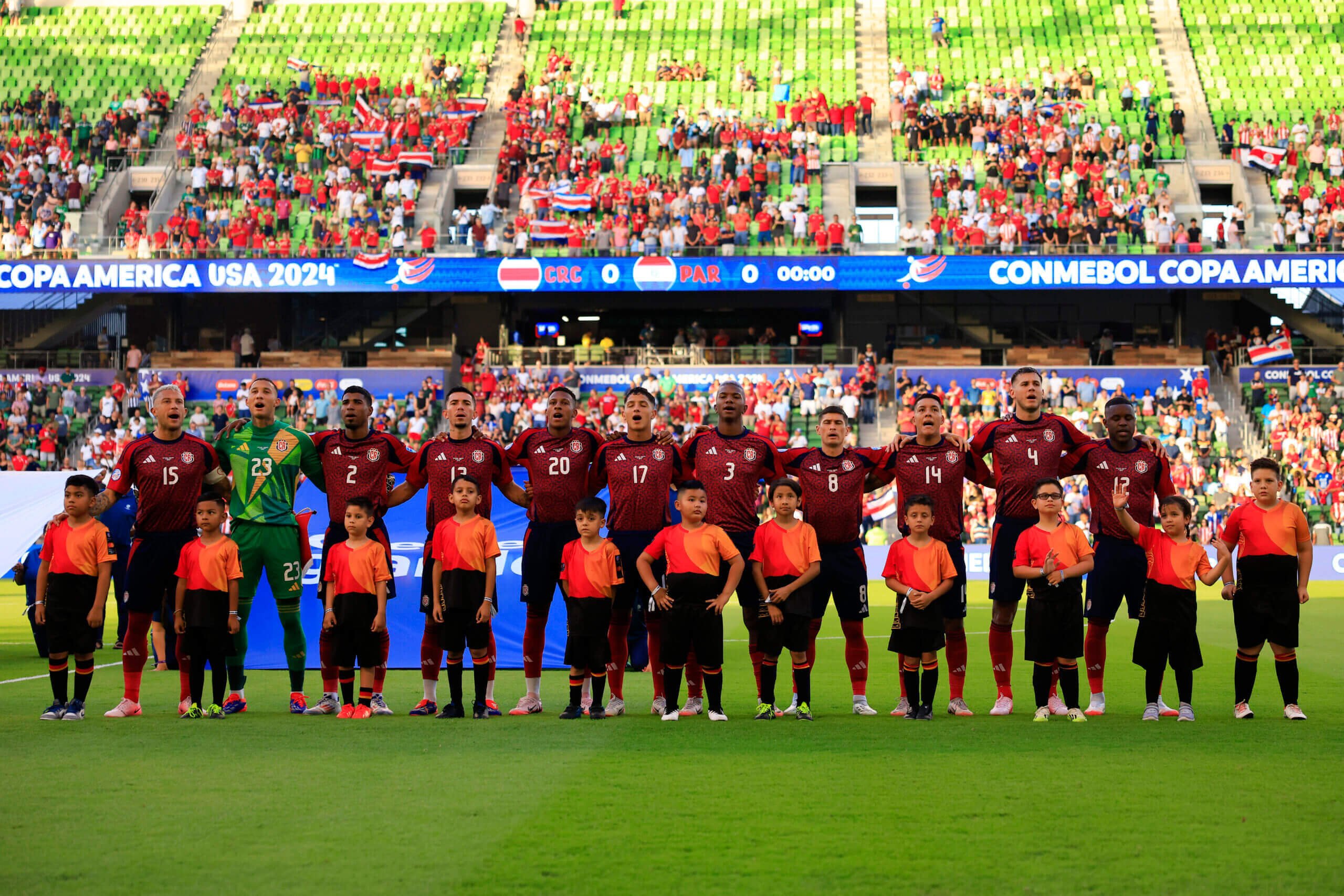Sports
Are the $200 tickets and empty seats for the Copa America a missed opportunity in the run-up to the World Cup?

Follow live coverage of Argentina versus Canada in the Copa America semi-final today
When Argentina returns to MetLife Stadium to take on Canada on Tuesday, it will likely be in front of a sold-out crowd. When they faced Chile in East Rutherford, it was the most attended match this Copa America so far.
It’s the norm at major tournaments: wherever the Argentina national team goes, the fans follow.
This summer they went from Atlanta to New Jersey, Miami to Houston and now back to New Jersey. The demand to capture Argentina and captain Lionel Messi has meant that tickets to see the world champions have been the most expensive. Still, fans have shown their willingness to pay hundreds of dollars for a single game ticket, if not more.
The average cost per ticket for the Copa America is high anyway; estimated at over $200 (£160), per multiple accounts. As we enter the final stages of the tournament, ticket prices are only going to increase.
Argentine fans at Hard Rock Stadium (Carmen Mandato/Getty Images)
For organizers CONMEBOL, participation in this year’s Copa America can be considered a resounding success. Eight days before the tournament, officials boasted that more than a million tickets had already been sold for the first 32 matches. Alejandro Domínguez, president of South American football’s governing body, said the officials were “filled with excitement and enthusiasm.”
Yet several group stage games also saw less than spectacular crowds, with every empty seat in cavernous NFL stadiums representing a missed opportunity to attract a fan who could have been enthralled by the growth of football in the United States. It doesn’t matter what impact it has on the players, or how shabby those empty seats look to those watching on TV at home.
While the Copa America started with a sellout of just over 70,000 fans at Atlanta’s Mercedes-Benz Stadium when Argentina was in town, the next five matches drew crowds that were tens of thousands of fans below the capacity of each stadium.
It wasn’t until the fifth day of competition, Colombia-Paraguay at the NRG Stadium in Houston on June 24, that we saw a full stadium again, as the table below shows. (Green indicates games that were considered sold out, while red was at less than 66 percent capacity – and note that Levi’s Stadium has expandable capacity.)

CONMEBOL said it considers nine of the 24 group stage matches sold out. 2016’s Copa America Centenario – which also took place in the United States – sold more than 1.5 million tickets and has served as a benchmark for organizers this summer. At the end of the group stage, sales were on track to reach similar figures to 2016, according to Ruben Olavarrieta, CONMEBOL’s commercial manager in charge of ticket sales.
Speaking ahead of the tournament, CONMEBOL Deputy Secretary General of Football Nery Pumpido said The Athletics that tickets “were set at a price that I think has been important because people are coming to buy a lot.”
Overpriced tickets were beyond the confederation’s control, he continued, because the dynamic ticket prices that determine these figures are handled by the ticketing partners at each stadium.
“From what has been shown so far,” Pumpido said last month, “the price was right.”
Dynamic prizes have the potential to price out fans from some countries participating in the tournament. Not only are tickets expensive, but any tourist attending matches would also have to factor in hotels and flights in the United States – as well as travel between stadiums if they want to attend multiple matches.
Average take-home pay in many of the competing Latin American countries is falling below $900 (£700) per month. In Argentina, where inflation is among the highest in the world, the average net monthly salary was estimated at $423.32 last year, according to Statista.
In many ways, dynamic ticketing favors American buyers with higher incomes and lower travel costs. The large diaspora of Latino communities in the US, combined with the popularity of some tournament favorites, means Argentina, Brazil and Colombia have drawn the biggest crowds, but not in every market. When Colombia and Costa Rica squared off in Glendale, Arizona, only 27,386 people filled the 63,400-capacity State Farm Stadium.
For the July 4 quarterfinal at NRG Stadium, where Argentina ousted Ecuador after a difficult penalty shootout, the cost for a single resale ticket on Ticketmaster started at $176 on match day. Even after eight minutes of play, tickets on StubHub were still going for $120.

Panama versus Bolivia in Orlando attracted 12,933 spectators, while the stadium’s capacity is 25,500 (Leonardo Fernandez/Getty Images)
Tickets for the remaining quarter-finals were still pricey, by football standards, but lower than Argentina-Ecuador. On Thursday, a single ticket for Venezuela-Canada at AT&T Stadium cost $107, $132 for Brazil-Uruguay at Allegiant Stadium and $70 for Colombia-Panama at State Farm Stadium in Arizona. That’s likely due to Colombia’s low turnout in that market during the group stage.
All these prices do not include service and processing fees, taxes and any public transportation or parking that may be required to get to a match. Parking will cost up to $132 for Argentina’s quarterfinal match in Houston.
But the prizes alone are not the only reason for the lackluster crowds at some of the tournament’s group stage matches. Better marketing around competitions could have raised the profile of some competitions, especially those in the United States. The team’s tournament opener against Bolivia at AT&T Stadium in Arlington, Texas, drew just 47,873 fans to the 80,000-capacity stadium.

GO DEEPER
How Uruguay against Brazil became the dirtiest match of this Copa America
UMSNT’s second match against Panama in Atlanta had just 59,145 fans in a 71,000 capacity venue. And when the US lost 1-0 to Uruguay at Arrowhead Stadium in Kansas City and exited the competition, just 55,460 fans filled the 76,400-capacity venue, while half of the upper bowl appeared empty on television. The sweltering temperatures and the team’s shocking fall to Panama the game before could also have been a deterrent.
The tournament was originally scheduled to be played in Ecuador, but almost everyone involved saw the move to the United States last year as a victory – except those in Latin America who saw it as an unpopular decision. For CONCACAF (the confederation for North and Central America and the Caribbean), it gave its member states the opportunity to shine on South America’s biggest stage.
It also gave the United States, Mexico and Canada, co-hosts of the 2026 World Cup, a chance to drum up fan interest ahead of the main event. Few South American countries have such high-capacity venues as the US, which is filled with huge NFL stadiums at the ready (even if that brings its own issues with some fields), which was a potential win for CONMEBOL. However, would it have been wise to host games in smaller Major League Soccer stadiums with larger fields in more established markets for soccer fans?

While unsold tickets mean lost revenue for the South American federation and other stakeholders, the lost opportunity is more of a problem for those looking to grow the game in North America. The failure of Mexico and the United States to progress beyond the group stage is considered a total failure for both countries. Instead of captivating the public with deep runs in the tournament and preparing the markets for 2026, the conversation is squarely focused on the crisis in which each country’s men’s football team now finds itself.

While Canada’s inclusion in the semifinals undoubtedly helps, the CONCACAF nation played in front of the tournament’s smallest crowd, such as the 11,622 fans who braved the heat to watch their 1-0 win against Peru at Children’s Mercy Park in Kansas City . That match, in which an assistant referee succumbed to heat exhaustion due to the high temperatures, was the least attended match all summer.
Canada has also had the misfortune of having to play teams with a clear home advantage in every match.
“With the way our fan base works and how diverse Canada is, even our home games (in Canada) have been very difficult,” defenseman Alistair Johnston said.
“And so I think most of our matches with the national team have always been in these types of environments, and I think that has helped us in the long run, so that when you play against Argentina, Peru, Chile, whoever, That is true, and probably also here against Venezuela. We are ready for that, because it has almost become the norm for us.”

Empty seats at the quarterfinal match between Colombia and Panama at State Farm Stadium, Arizona (Ezra Shaw/Getty Images)
The real crown jewel of the competition remains the final match at Hard Rock Stadium in Miami Gardens, Florida. The more limited capacity of 65,300 units ensures that demand only increases. However, tickets to sporting events and other entertainment in Florida are tax exempt from July 1 through the end of the month thanks to local law.
On Friday morning, a single resale ticket in the upper bowl at Hard Rock started at $1,369. That drops to $1,292 each if you buy two tickets together. That number will continue to rise and fall, with those same tickets costing $1,350 each just an hour earlier. The service fee for these tickets (an additional charge) was an estimated $271 each.
That’s why there will likely be several fans standing around the perimeter of the stadiums hosting these final few rounds of the Copa America, hoping to catch a glimpse of the madness as they watch the match from the comfort of their view on phone or tablet. Naturally, tickets for the other matches will continue to fluctuate depending on demand. So a fan sitting in the same section who bought tickets weeks earlier could end up paying hundreds more than a fan who bought a ticket hours before kickoff.
While the forensic accounting of attendance and ticket sales continues after the tournament’s final whistle, CONMEBOL has made one thing clear: the US market wants to keep exploring.
“It’s a place to watch, especially as host of the World Cup in 2026. That’s important to take into account,” Pumpido said.
“We believe that the United States has also made great progress at the football level… (and) has made a lot of progress with the arrival of Messi. Of course, CONMEBOL will always keep the United States in mind for future tournaments.”

GO DEEPER
USMNT had questions before Copa America exit. Now they’re getting even louder
(Top photo: Empty seats for Costa Rica against Paraguay in Texas; by Buda Mendes via Getty Images)













